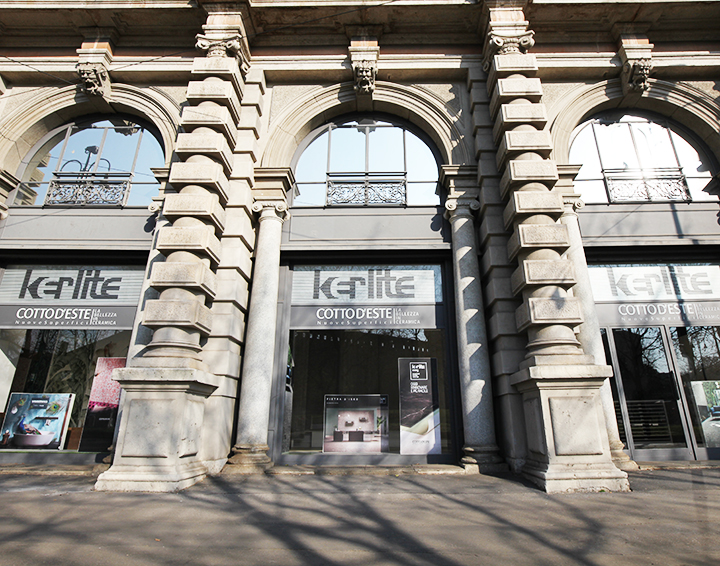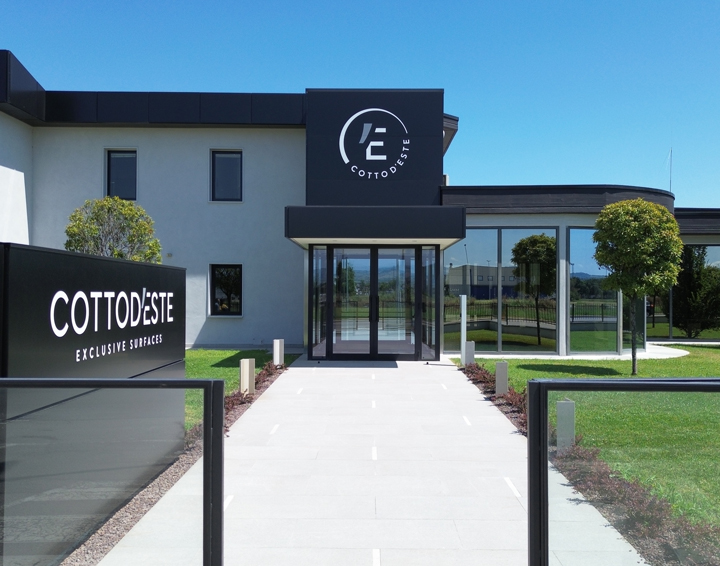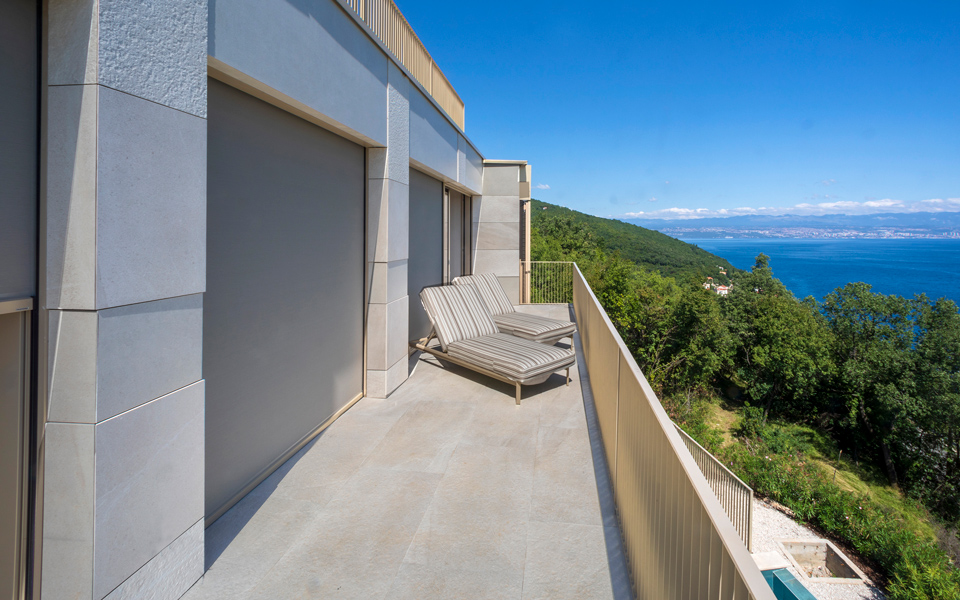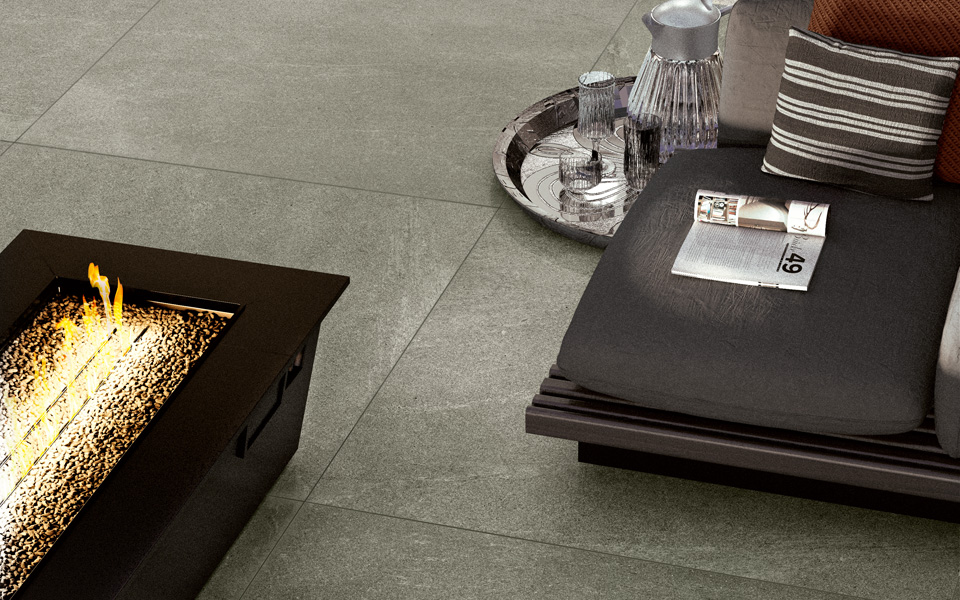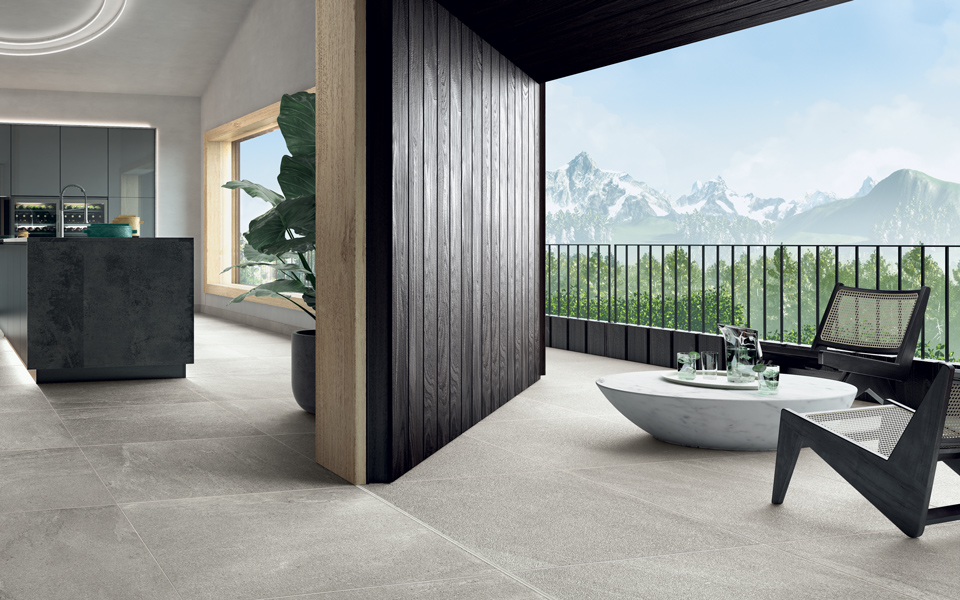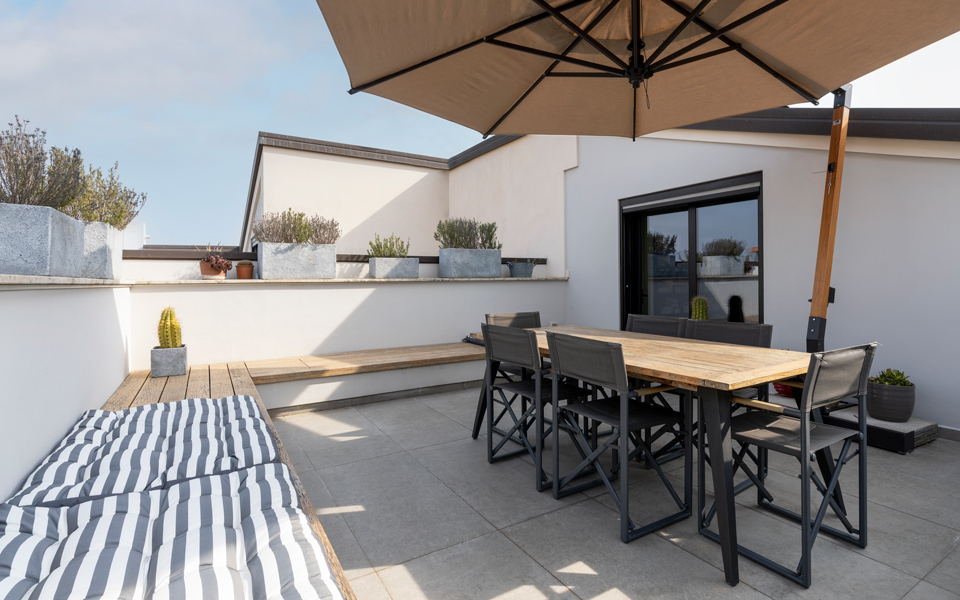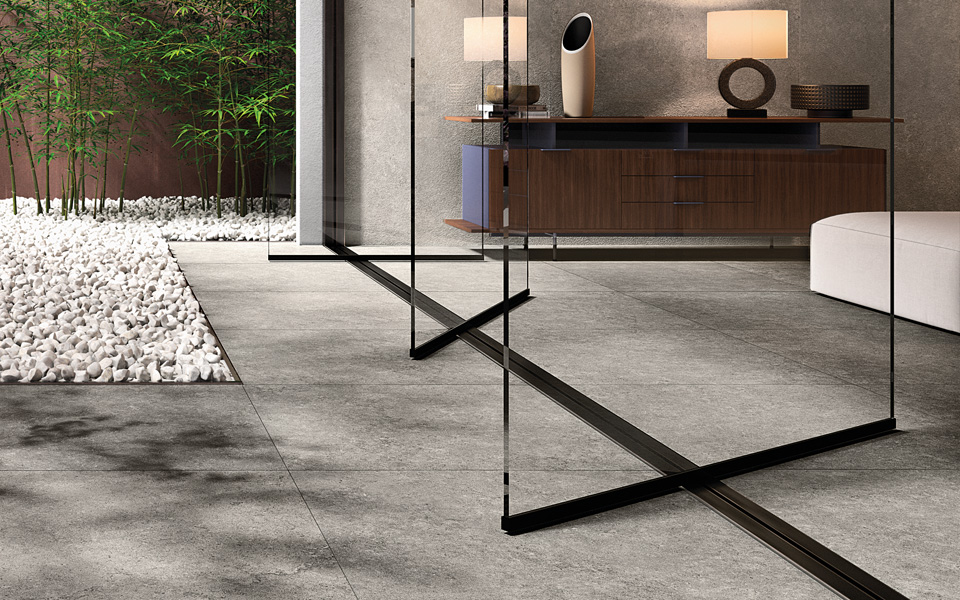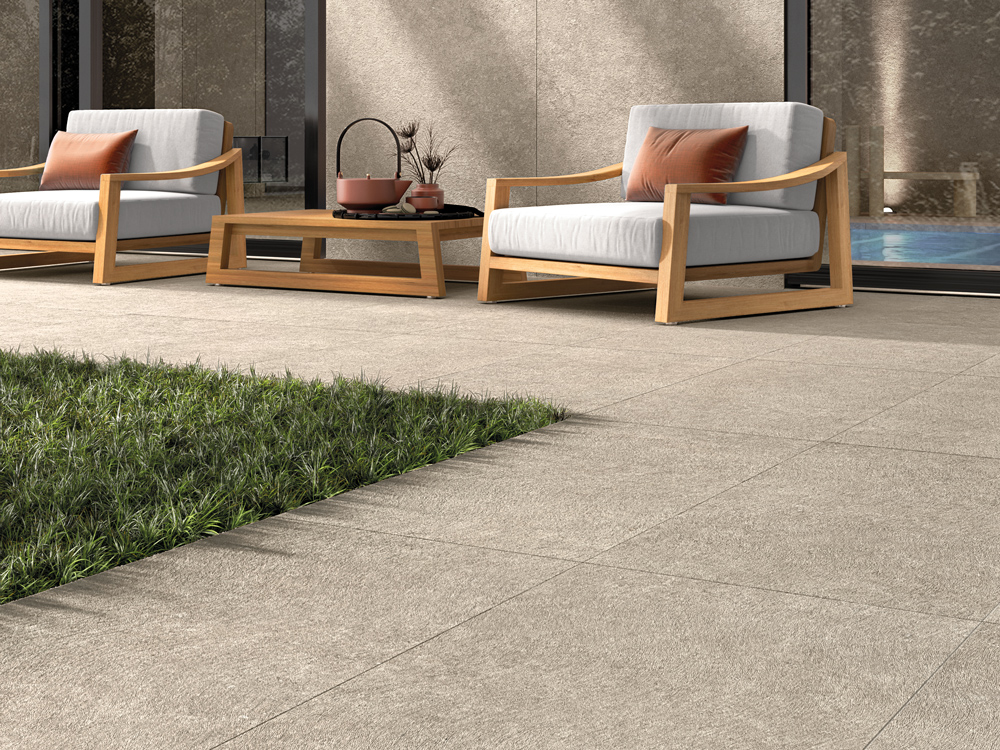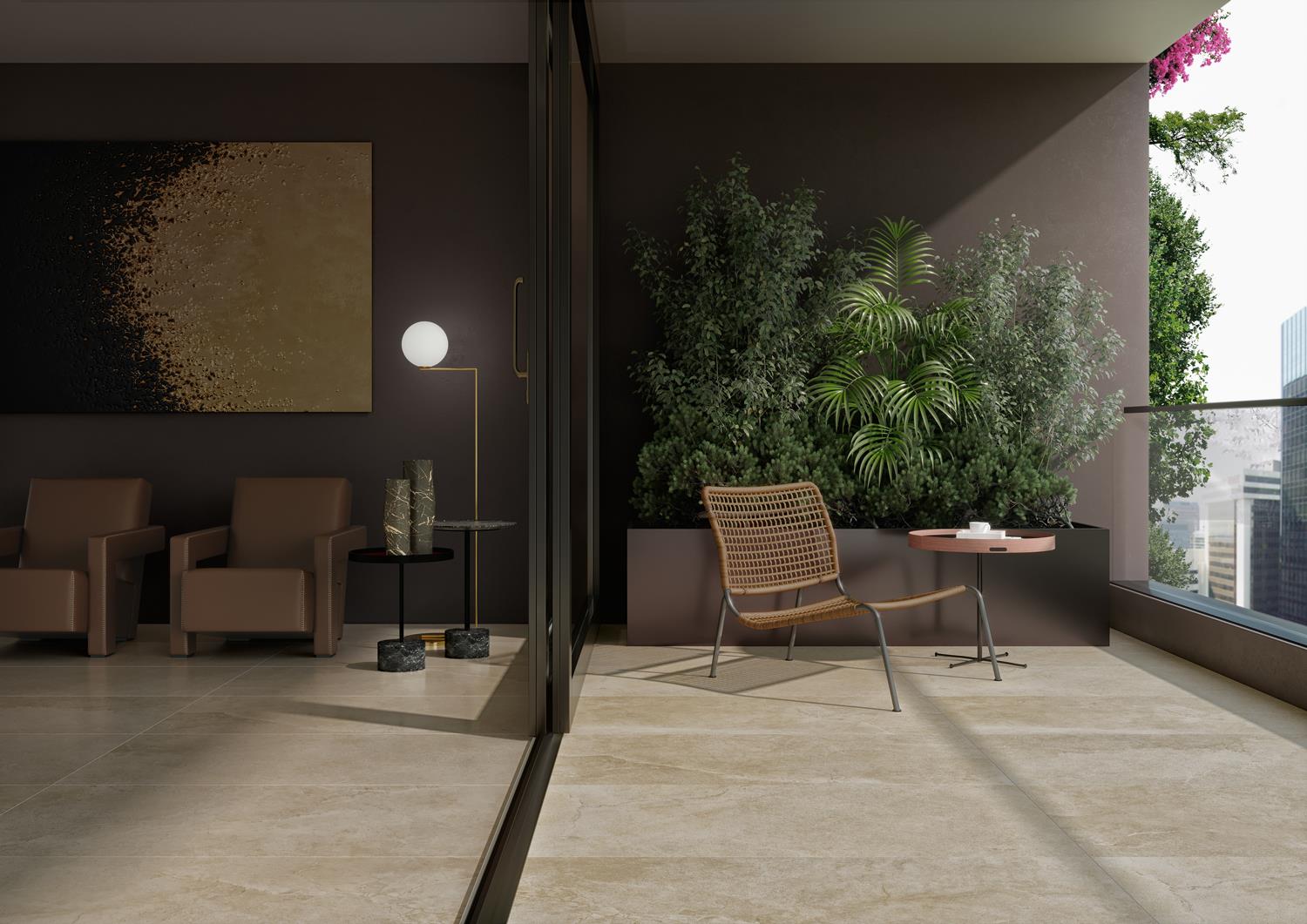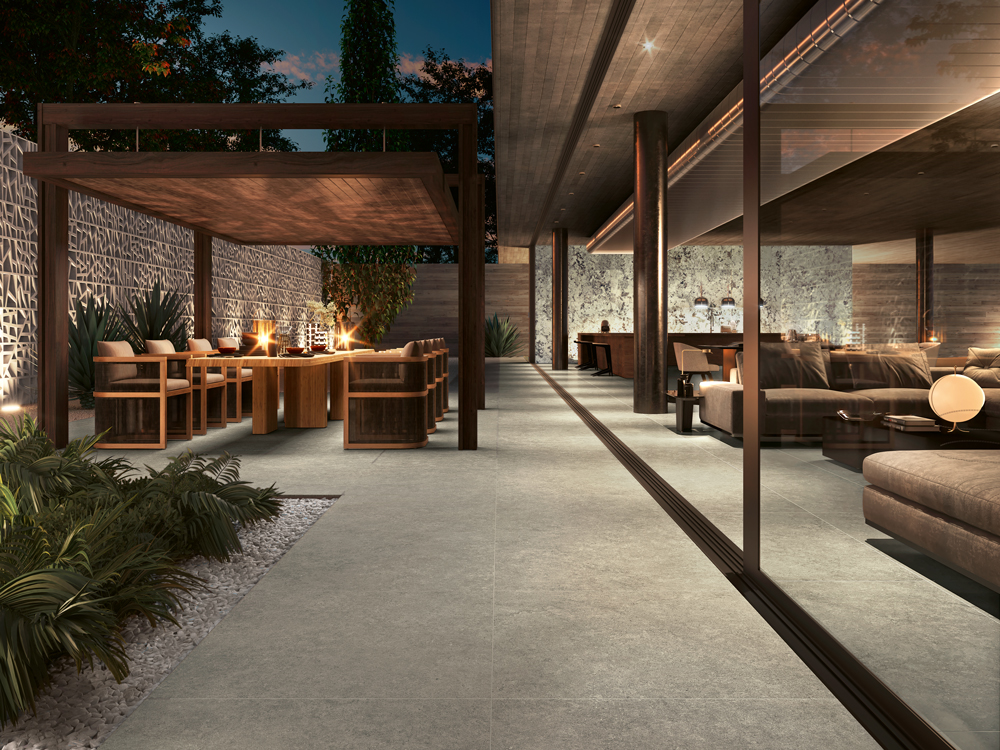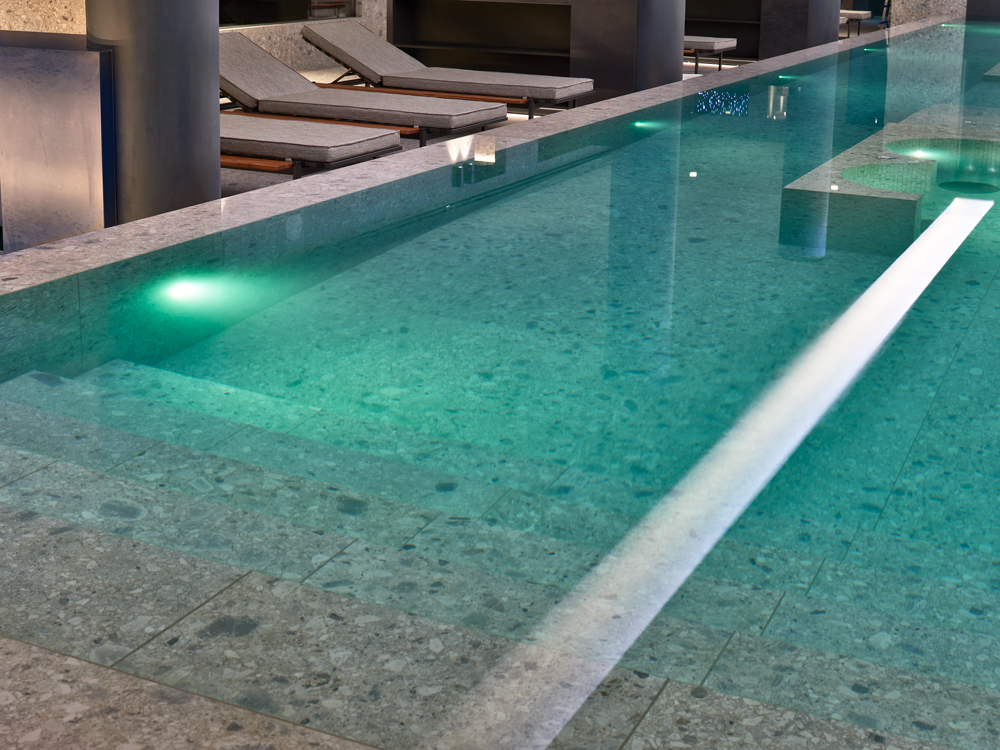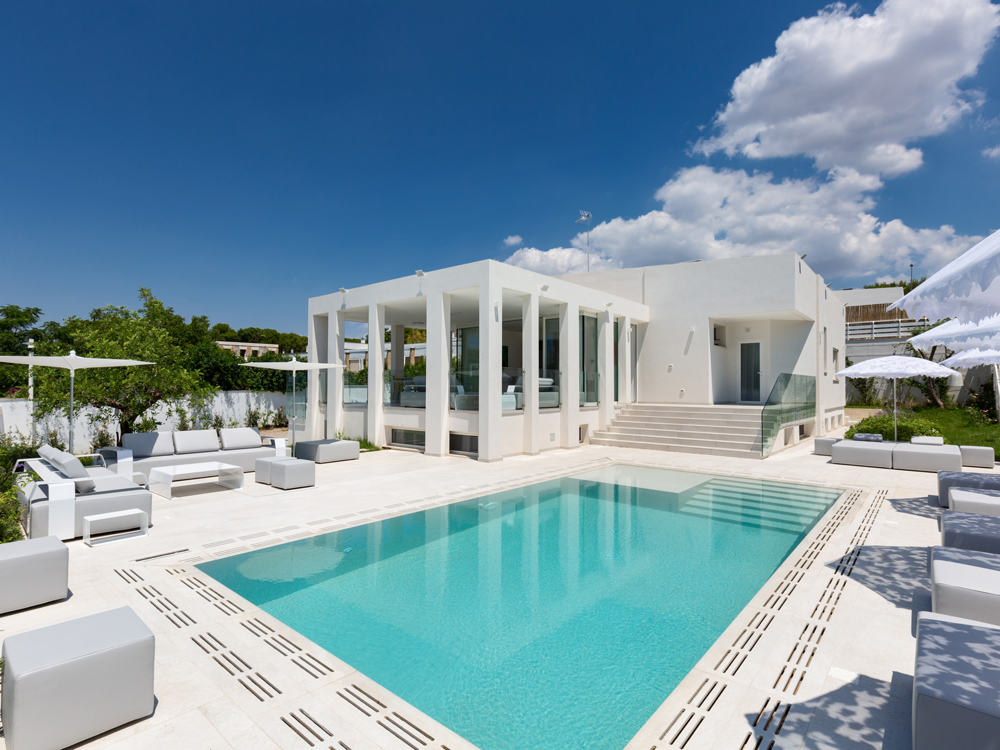The Terrace According to Cotto d’Este
In Cotto d’Este’s catalogue, porcelain stoneware is available in both traditional thicknesses and the 20 mm thickness, primarily in various stone-look collections, a look that has always been a focus of the brand’s aesthetic research. Regarding the technological segment that we have termed “traditional thickness”, it’s important to note that, since its foundation, Cotto d’Este has made a deliberate choice, both as part of its identity and in order to differentiate itself from the rest of the ceramic market, to increase the thickness of this category of tiles from 10 mm to 14 mm. These few millimetres make an enormous difference in terms of the tiles’ durability. In addition to the aforementioned Pura and Lithos collections, we would also like to highlight the Limestone and Secret Stone collections, two of the brand’s long-standing best-sellers.
As for the 20 mm thickness, a perfect example of this technology tailored to the outdoors is the Blend Stone series, a stone-look collection that, in the 20 mm version, achieves a slip-resistance rating of R12, perfect for various outdoor applications, even in public settings.
en
